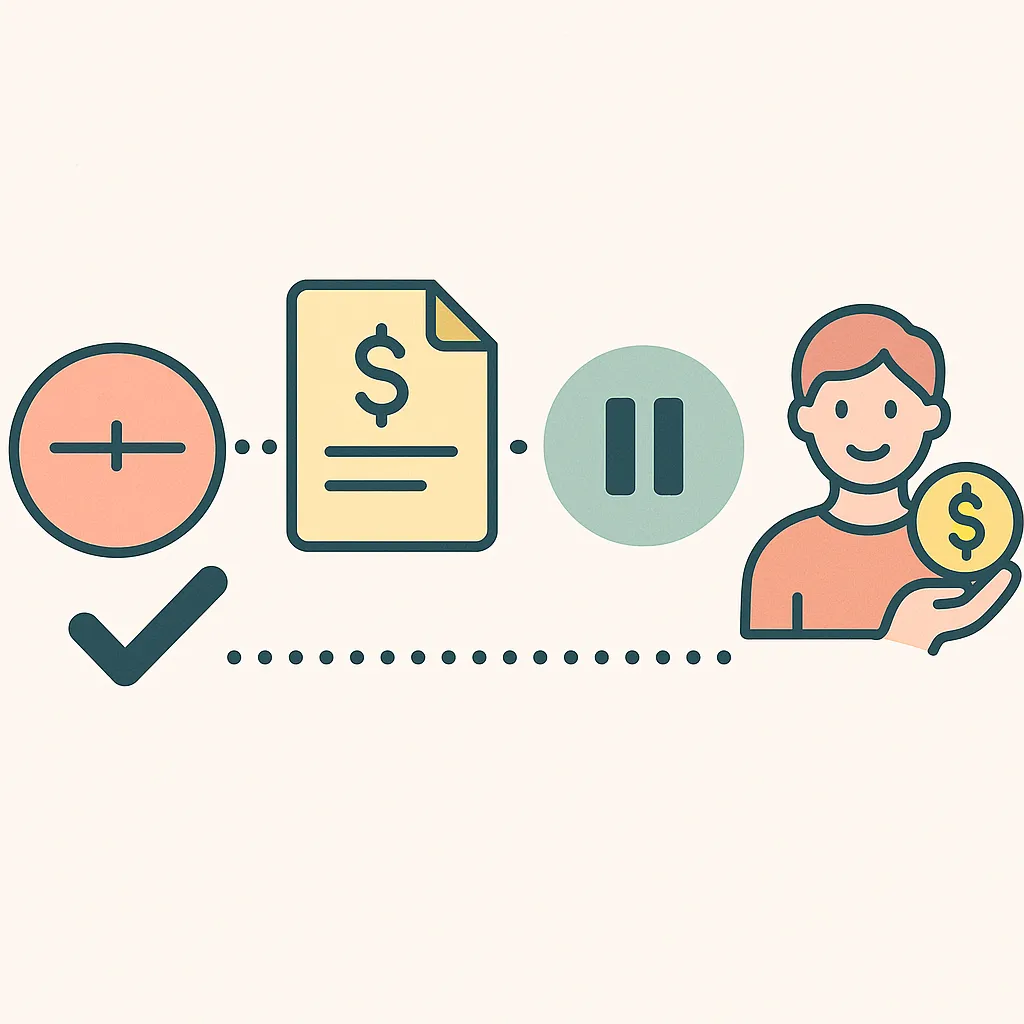Simple Versus Compound Interest Fundamentals - Part III
5. Strategies and Math Behind Paying Off Loans Early
1. Compounding in Reverse
Most amortizing loans front-load interest: in month one, almost all of your payment compensates the lender, not your balance. When you remit even a modest extra sum, the entire surplus attacks principal and permanently eliminates the interest that principal would have generated for every remaining month. Consider a $250,000, 30-year mortgage at 5 percent. The scheduled payment is roughly $1,342.

Add $50, and the loan disappears 2 years 4 months sooner while erasing about $21,300 in interest charges[15].
Because interest is recalculated on a smaller balance after each prepayment, the savings accelerate—mathematicians call it “negative compounding.” Scale the idea to a $600,000 loan at 6 percent and an extra $1,000 monthly: the homeowner pockets almost $320,000 and shortens the term by 12½ years[16]. The key insight is timing; dollars deployed while the loan is young have decades to prevent interest from ever accruing.
2. Pay Down or Invest?
Opportunity cost, however, matters just as much. Since its 1957 inception the S&P 500 has produced an average annual total return a little above 10 percent before inflation[17]. The typical 30-year fixed mortgage originated in July 2025 costs about 6.72 percent per year[18].
Suppose you owe $200,000 at 4.5 percent and can spare $500 monthly. Directing that cash to principal saves roughly $64,000 and cuts nine years off the schedule[19].
Put instead into a low-cost index fund earning 8 percent—a historically conservative after-inflation return—the same $500 compounds to about $302,000 over the 21 years the mortgage would otherwise run[20]. Early payoff therefore behaves like a “guaranteed bond” whose yield equals your after-tax interest rate; investing offers a probabilistic but potentially higher payoff. Your risk tolerance, horizon, and marginal tax bracket determine which path maximizes lifetime wealth.
3. Checklist Before You Accelerate
Before mailing an extra check, run a pre-payment checklist. 1) Liquidity: always keep three to six months of essential expenses in cash; converting home equity back into spendable dollars generally requires expensive refinancing or a home-equity loan[21].
2) Higher-rate debt: paying 18 percent credit-card interest beats shaving 6 percent mortgage interest every time. 3) Tax position: the 2025 standard deduction means only about 11 percent of U.S. filers now itemize, so the once-vaunted mortgage-interest deduction rarely tips the scales.
4) Psychological value: retirees and near-retirees often prize the certainty of a paid-off roof more than the possibility of superior market gains. 5) Hybrid tactics: making bi-weekly half-payments or directing annual bonuses to principal lets you split the difference, chipping away at debt without foregoing market participation. Running the numbers annually keeps the strategy aligned with changing rates, goals, and life events.
1. Time-Value Twist
An extra $100 added to the very first payment of a new 30-year, 6 percent mortgage prevents roughly $588 in future interest—almost a 6-to-1 return—whereas the same $100 applied halfway through the schedule saves only about $175.
6. Understanding Moratorium Periods
1. What Is a Moratorium Period?
Moratorium periods are pre-agreed spans—typically three to 24 months—during which a borrower is allowed to postpone principal, and sometimes interest, payments without being declared in default.[22] Lenders insert this pause at the beginning of amortization schedules to help borrowers align cash inflows with upcoming obligations.

For mid-career professionals who may be juggling tuition loans, mortgage renovations, or a sabbatical, the breathing room can be invaluable: funds that would ordinarily service debt can instead cover living costs or be reinvested for career-advancing certifications. Technically, interest usually continues to accrue and is capitalized—added to the outstanding principal—once payments resume, so the total cost of borrowing rises.[23] Still, the time-value trade-off can be worth it if the borrower expects higher earnings or lump-sum liquidity later.
Beyond personal finance, moratorium clauses appear in project-finance loans, where infrastructure assets take years to generate revenue, and in education loans, where repayment starts only after graduation. Because the details are contractual, borrowers should scrutinize three factors: 1) length of the grace window, 2) whether interest accrues simple or compound, and 3) the trigger that ends the pause—often first disbursement, degree completion, or project start-up.
1. Word Origins
The term “moratorium” stems from the Latin mora, meaning “delay”—the same root that gives us “demur,” to hesitate.
References
- [15] Early Payoff Calculator
- [16] Early Payoff Examples
- [17] S&P 500 Average Return
- [18] Freddie Mac Weekly Survey
- [19] Early Payoff vs. Invest Calculator
- [20] Investment Growth Illustration
- [21] Benefits and Pitfalls
- [22] Investopedia – Moratorium Period
- [23] Federal Reserve Consumer Help – Loan Payment Relief



